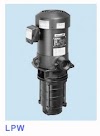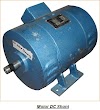Types Of Polymers
The term "polymer" refers to a chain of thousands of monomers bonded together by the polymer backbone's carbon atoms. For example, poly(ethylene) (commonly known as polyethylene) is made up of thousands of ethylene molecules (monomers) that are bound together to form a lengthy chain. Polymer structure is represented by tangled chains that form low-density structures with little uniformity. The attractive forces between polymer chains play a big role in the structure and characteristics of a polymer. Weak forces exist between the chains of some polymers, such as polyethylene. These polymers have low strength and melting temperatures due to the low bond strength between the chains, but they can form ordered structures (crystallize) if cooled slowly from a liquid state (after which they become opaque due to the regular polymer structure scattering light). These polymers are thermoplastic, meaning they may be heated and cooled repeatedly to generate a viscous melt and solid structure. Polymers with stronger chemical crosslinking between the chains have higher tensile strengths, are unable to form organized structures (and hence remain amorphous and transparent, like glasses), and do not soften when heated (they burn instead and are termed thermosetting).
Rubber is an elastic hydrocarbon polymer (elastomer) found in the sap of various plant species as a milky colloidal suspension (latex). Rubber can also be made synthetically by polymerizing a number of different monomers. Rubber is made up of long, coiled strands that are interconnected at a few spots when it is relaxed. The coiled chains unravel when rubber is stretched, but they re-coil when the rubber is released. Rubber vulcanization increases the number of linkages between chains, reducing the length of each free segment of chain and making the rubber stiffer and less extensible.
Polymers are widely used because of their good strength, low density (light weight), low cost, and ease of fabrication. Here are a few examples:
Nylon
Nylon has good mechanical properties and abrasion resistance, as well as being self-lubricating and chemically resistant. It's a material commonly for gears and bearings.
Kevlar
Kevlar fibers are often used to reinforce tyres, bullet-proof jackets, and sports equipment due to their great tensile strength and stiffness.
Perspex
Perspex is a strong material with good optical qualities (it can be clear or opaque), weathers well, and is chemically resistant. It's a common material for lenses, windshields, and windows.
Polyethylene
Polyethylene is a medium-strength plastic that is easy to shape. Houseware, bottles, and automobile bumpers are made of low-density polyethylene, while canoes and machine parts are made of high-density polyethylene.
Epoxies
Epoxy resins with good adhesive characteristics, such as Araldite™, provide outstanding mechanical properties. They are utilized as matrix for polymer composites and are resistant to heat and chemical attack.
Phenolics
Bakelite™ and other phenolics are fragile but have strong heat, electrical, and chemical resistance. They're employed as insulators and connection blocks in electrical systems.
Rubbers
Natural and synthetic rubbers (such as neoprene and silicone) are flexible and can be made more durable by adding fillers like sand or graphite. They're utilized in vehicle tyres, tubing, "O" rings and gaskets, and insulating electric wires, among other things.
Sumber http://keluargasepuh86.blogspot.com








